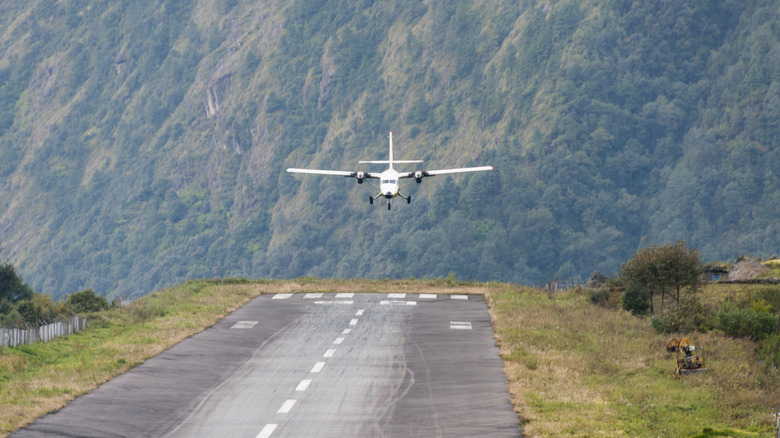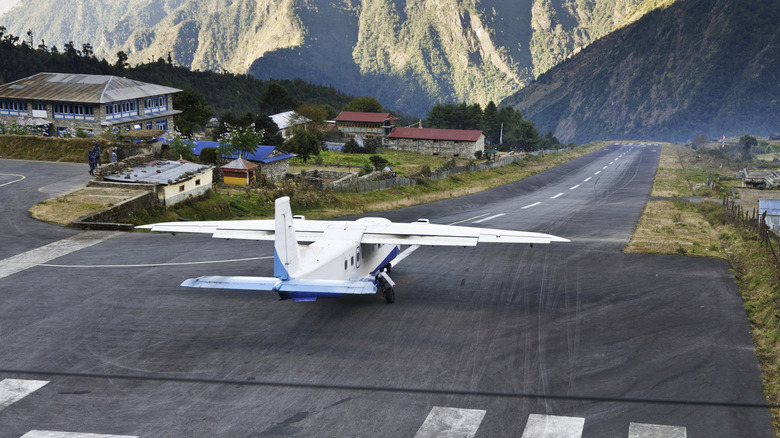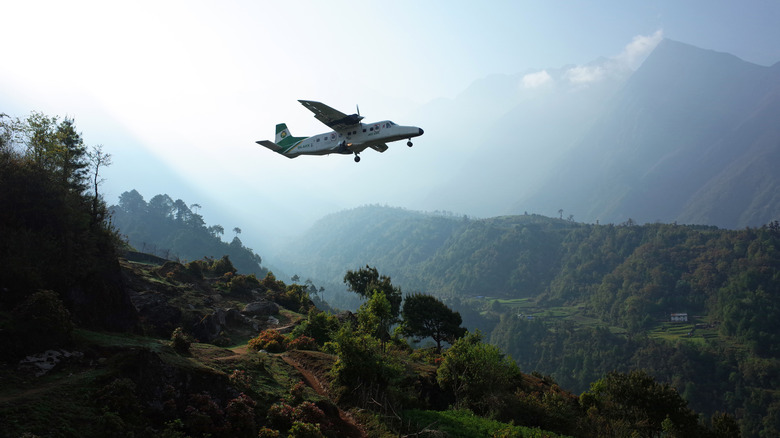If you want to climb Mt. Everest, you may very well find yourself flying into Lukla Airport. This is not what anyone would consider a good thing. The airport is widely considered the most dangerous in the world, and just looking at online videos of planes landing here would give many of us vertigo. Long before you stick your axe into ice, before you strap on belay ropes and crampons, and before you even reach the Everest Base Camp, your small prop plane will have to land on a 1,729-foot runway. At the end of this strip of tarmac is, essentially, a wooded ravine, followed by the steep slopes of 18,000-foot-tall mountains. The airport itself is already about 9,500 feet above sea level, which is half as tall as the tallest U.S. mountain east of the Mississippi River.
When you hear about the short runway, treacherous drop-offs, and surrounding cliffs, you may wonder: Couldn’t someone get killed trying to fly under those conditions? In short, yes. But those hazards aren’t even the full story: Crosswinds can get so powerful that the airport routinely closes. Fog and rainfall can also inhibit visibility, and heavy snowfall in winter can blanket the abbreviated landing strip. There are at least 17 airports around the world that are conspicuously dangerous, but Lukla doesn’t just look scary. More than 50 people have reportedly died during takeoffs and landings at this airport, including a crash in 2012 that resulted in 19 fatalities.
The high-flying history of the Lukla Airport
Nepal’s fraught relationship with flying
The truth is, the Himalayas just aren’t a great environment for airplanes. This mountain range, which stretches thousands of miles across multiple time zones and national borders, has an average elevation of 20,000 feet, which is about the same as the tallest peak in North America. The cruising altitude for a commercial passenger jet is typically around 35,000 feet above sea level, only a little higher than Mt. Everest’s summit. Note that most planes that fly into Lukla aren’t jumbo jets but smaller planes like the Twin Otter, which is outfitted with propellers and usually carries about 19 passengers.
Since 2000, at least 360 people have died in Nepal due to aviation accidents, including airplanes and helicopters. Even if you take away the elevation, Nepal still struggles with outdated equipment, artificially flat runways carved out of mountains, and questionable training. A plane crash in 2023 resulted in 72 deaths, and although the Yeti Airlines flight was attempting to land in the city of Pakhora, the tragedy hinted at wider systemic problems across Nepal. According to a follow-up investigation, the pilots had accidentally mishandled their instruments. Nepal-based airlines are actually banned in the European Union because they are deemed too unsafe.
Many will argue that attempting to climb Mt. Everest is already a treacherous pastime, and Lukla Airport is just par for the course. Others will suggest that 50 successful flights per day is a pretty fantastic track record, especially for such a remote and difficult location. Skilled pilots take off and land here over and over without any serious incidents. Few of us will ever have to face this fear head-on. If you do explore Nepal, maybe avoid the crowded trek to Mt. Everest in favor of this Nepalese mountain adventure.




